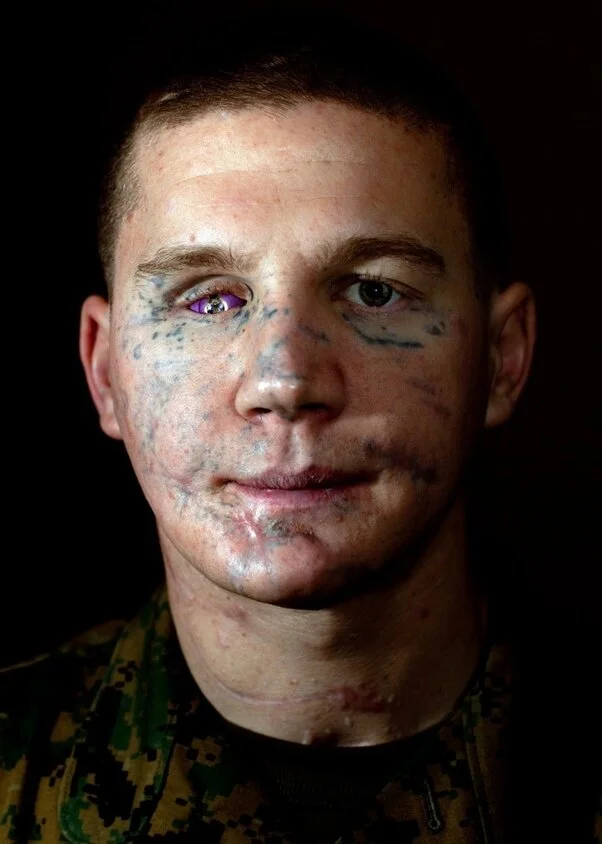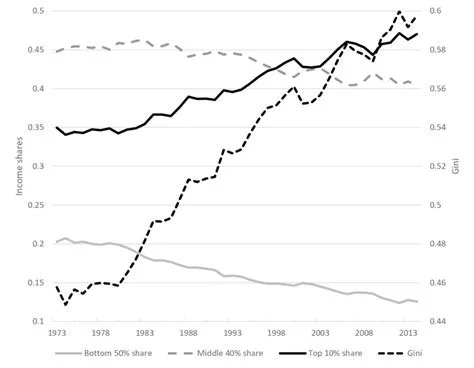The Waves of Suffering: Part II
n.b. Below is Part II of a two-part series. Click here to read Part I.
In my mind, we must meet these waves with a clear courage and with a focused fortitude. When wading through the rough surf of life, with the wind whipping past us and the faint hint of salt on the back of our tongues, it is easy and dangerous to merely tread water, to pay heed to life’s minutiae at the expense of anticipating and preparing for dreadful, billowing waves on the horizon.
When distracted in this manner, when wittingly glancing instead of gazing, we lose the physical and mental footing required to navigate situations that demand our full attention. Buffeted by forces of volatility, uncertainty, complexity, and ambiguity, the ocean floor on which we stand, much like life, is ever-shifting. This entropic blend generates calamity that is indiscriminate and fitful in its striking.
As poet Audre Lorde so eloquently writes:
Sometimes we are blessed with being able to choose the time, and the arena, and the manner of our revolution, but more usually we must do battle where we are standing.
When doing battle, we too often take a sidelong, oblique angle of attack against waves which must be confronted head-on. These thundering waves demand the regard of every fiber of our being. They come in various forms: when death casts a pall over the world by taking a cherished friend far too soon; when a doctor scrawls “prognosis, poor” on the chart at the foot of a bed; when a broken marriage resembles irreparably shattered china.
Just as there is no use tip-toeing into a cold body of water or gingerly entering a frigid shower, so too is it futile to run from these waves or to meet them with trepidation.
Instead, you must march, walk, trudge, crawl towards that which gnaws at you, towards the inevitable bombs of life, towards those things which terrify you and shake your confidence. You must rip the metaphorical band-aid from the uncooperative skin of a feeble, fragile psychology. Facing these waves squarely, you must stand with a steady foundation, upright and strong, and directly launch yourself towards them in order to emerge robust on the other side.
Above: Diving into the depths of suffering.
These waves are not to be feared; they are a necessary and important part of existence.
After all, suffering is an arcane discipline. Though superficially adverse, if viewed properly, it can invite transformative catharsis. If you submit to its force and frenzy, its crucibles have the ability to meld you into a more magnificent human being. Some of these trials will glance off you lightly, others will knock you flat on your back. Both kinds of tribulation provide the raw material with which to construct an indomitable willpower and an impregnable psyche.
Three analogies aptly describe suffering’s superficial pain and deep catharsis:
Physical Therapy
When playing baseball in high school, I went down my junior year with severe tendinitis of the elbow and shoulder. Instead of surgery, my orthopedist prescribed Physical Therapy. Though immensely beneficial, there was no gauntlet more excruciating than the intrusive kneading of my therapist’s callused hands, the unnerving pulsation of electrical stimulation, and the agonizing sting of gelid ice on bare skin. This painful and deeply unpleasant regimen was necessary to regain my mobility and strength.
Complete Metamorphosis
Butterflies are often viewed as a cheery symbol of transformation. Interestingly, their complete metamorphosis from caterpillar is neither bright nor easy. It is gruesome. Inside the enclosed chrysalis, all of the caterpillar’s internal organs melt. It becomes a living soup, completely unrecognizable from the creature it was. This macabre process activates a few tiny, powerful cells that remember what it was and what it is meant to become. These cells initiate just the right DNA sequences in order to turn the wreckage of the caterpillar into the beautiful resurrection that is the butterfly. None of this happens unless the caterpillar completely goes away. The caterpillar has to die in the worst possible fashion in order to develop into the best version of itself. From violence and suffering come rebirth.
Cognitive Behavioral Therapy (CBT)
Individuals that suffer from Tourette syndrome or Obsessive Compulsive Disorder often partake in a regimen called Exposure and Response Prevention. ERP, as it is known, is a type of behavioral therapy that exposes people to situations that provoke their obsessions and the resulting distress while helping them prevent their compulsive responses. ERP forces patients to grapple with deeply disturbing, negative experiences so that they overcome the disruptive nature of OCD-driven anxiety. In other words, ERP involves facing agonizing scenarios and phobias head-on. For instance, if afraid of contamination, therapy might involve something like a patient sticking his/her hands in a vat full of mud and grime and remaining “unclean” for a period of time. Though intensely unpleasant and anxiety-inducing, ERP provides respite by forcing patients to face the crucible that is their most dreaded fear and empowering them to realize that they are psychologically stronger than their disorder.
Do not be afraid to suffer. You can actively dislike the pain that suffering brings yet still walk through its glowing fires. Heed the words of the late, great Muhammad Ali: “I hated every minute of training, but I said, 'Don't quit. Suffer now and live the rest of your life as a champion.’”
It is important to take the gist of Ali’s words to heart. Namely, the more you sweat in peace, the less you bleed in war. To do anything else is to deny that which is, or will be, right in front of you. After all, losing pints of water certainly beats losing gallons of blood.
As Seneca writes in his epistles:
You should assume that there are many things ahead you will have to suffer...Is anyone surprised at getting a chill in winter? Or getting seasick while on the sea? Or that they get bumped walking a city street? The mind is strong against things it has prepared for.
Instead of deluding ourselves, we must make mental preparations in order to emulate the very best of human fortitude, taking inventory of brave figures from great literary works.
Men like the beleaguered Edmond Dantès in The Count of Monte Cristo:
Life is a storm, my young friend. You will bask in the sunlight one moment, be shattered on the rocks the next. What makes you a man is what you do when that storm comes. You must look into that storm and shout as you did in Rome. Do your worst, for I will do mine!
Men like Dienekes, the apocryphal Spartan from the Battle of Thermopylae, whose clever rejoinder Herodotus preserved in his Histories:
[T]he Spartan Dienekes is said to have proved himself the best man of all…being informed…that when the Barbarians discharged their arrows they obscured the light of the sun by the multitude of the arrows…he was not dismayed…[M]aking small account of the number of the Medes, he said that their guest…brought them very good news, for if the Medes obscured the light of the sun, the battle against them would be in the shade.
Take heart in the knowledge that your suffering represents just one strand in the cord that braids all of humanity’s ordeals together. Embracing your existence as member in this global communion is unfathomably freeing.
Though everyone’s suffering is sacred, not all suffering stands out.
Kyle Carpenter’s certainly does.
His actions and selflessness provide a tremendous real-world example. The youngest living Medal of Honor recipient, a man who dove on a live grenade in order to shield his fellow Marine from its deadly blast, he believes, “It’s the deepest, darkest, lowest moments in life that teach us the most beautiful lessons.”
Above: The very face of valor.
While Carpenter’s extensive wounds, myriad surgeries, and grueling rehabilitation represent the far extreme of suffering, his indomitable will should inspire us. Here is a man who sliced through countless volatile, choppy waves with a focused vim and vigor; one who stood on his own two feet, tensed his weary calves, thighs, and knees, and propelled himself through the maelstrom to arrive at tranquil waters off which the sun glints and glistens.
Carpenter allowed misfortune and the trials of the world to hit him with their best shots.
And yet, he stood firm.
His is the perfect example of patience, poise, and fortitude in the face of pain and suffering. When I reflect upon his strength and sacrifice, four quotes come to mind:
“Patience is…the radiant essence of final freedom from harm. Patience is, as Hildegard of Bingen states, ‘the pillar that is weakened by nothing.’” — A Brief Reader on the Virtues of the Human Heart
“Mental Toughness is persistence, not intensity.” — Atomic Habits: An Easy & Proven Way to Build Good Habits & Break Bad Ones
Nolite te Bastardes Carborundorum ("Don't let the bastards grind you down") — The Handmaid's Tale
“I can't go on. I'll go on.” — The Unnameable
As Carpenter shows, one can hone and harness waves of suffering. If used properly, their cascading, innate energy can drive action, progress, and advancement.
I liken these waves to an unstable element like uranium. Though destructive and dangerous if mishandled, when properly channelled it can produce a colossal amount of energy.
The key lies in transforming suffering from debilitating headwind to hurtling tailwind. To paraphrase Jimmy Iovine,
We all [encounter suffering] and it’s a gigantic headwind. But at a certain point, if you can...flip it, really turn it on its head and make it a tailwind, it has massive energy, and it can get you through anything. It pushes you forward instead of pulling you back.
Allow your suffering to serve as propellant for growth, catharsis, and beauty. Thrust your trials and tribulations into the light where they have no place left to hide. Awareness begets acceptance. Acceptance begets advancement. Advancement begets achievement. Achievement begets actualization.
Heed the advice of Amelia Boone:
I urge you to discuss your suffering. Seek it out, corner it, wrangle with it, and expose it to that courage that already lies deep within you.
That courage that already lies deep within you.
This line struck me right in the supposed wellspring deep within me.
It reminded me of an anecdote I had just read in Erik Larson’s masterful saga of Winston Churchill, his family, and his defiance during the Blitz, The Splendid and the Vile:
During the Battle of Britain, a close aide told Churchill that “the best thing he had done was to give the people courage.”
He vehemently disagreed.
“I never gave them courage,” he said. “I was able to focus theirs.”
Dig and tap into that which lives deeply within you.
Marshal your innate strength and fortitude.
Perhaps it has been neglected for some time.
Perhaps rust must be shaken from its mantle.
Nevertheless, it resides ever present and at the ready.
Use it to turn into the waves.
Let them wash the dust and detritus off you so that you may be baptized in the gauntlet of emotion, suffering, and turmoil.
Sit with the unfamiliar entropy of chaos and find strength from its careening energy.
Let no one say that you did not handle your suffering, your burden, with grace, aplomb, and grit.
For there is nothing sweeter than emerging above water after diving under a wave. After surfacing from the frothy, murky depths, take comfort in the warmth of the sun’s rays; derive strength from a hearty gulp of sweet, salty ocean air.
Such is the triumph of a deserved victory. Of, per the Second Letter of St. Paul to Timothy, “[fighting] the good fight…[finishing] the race…[keeping] the faith.”
Above: Take it from the British Bulldog, himself.







